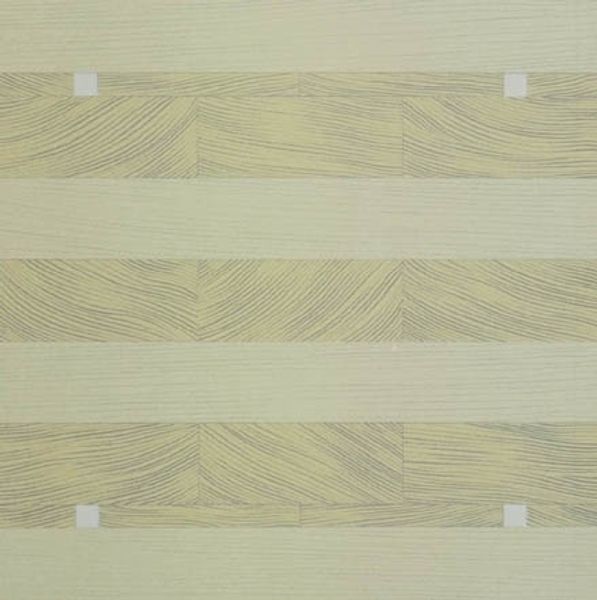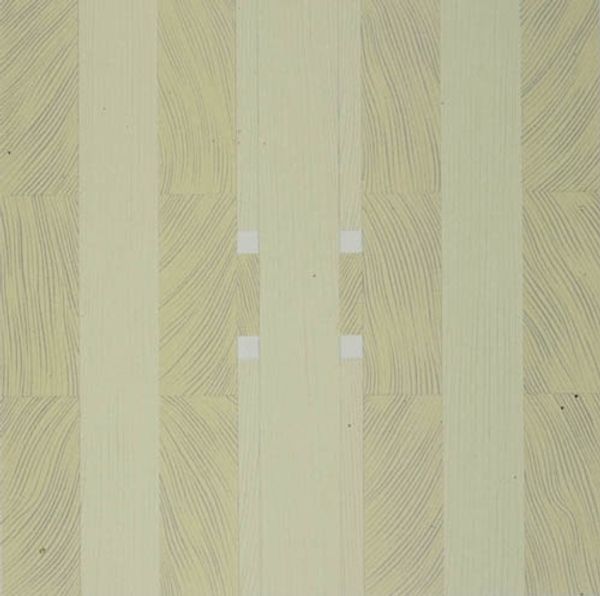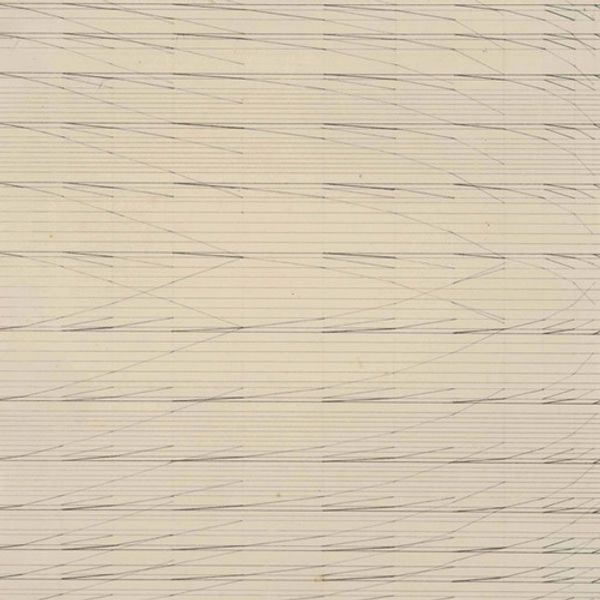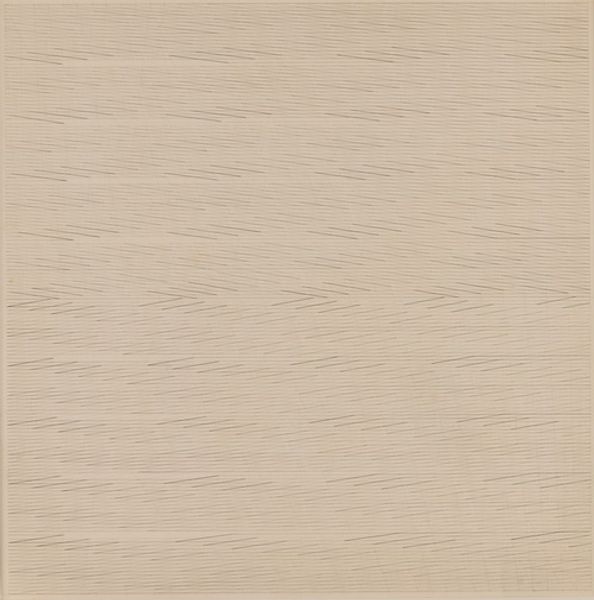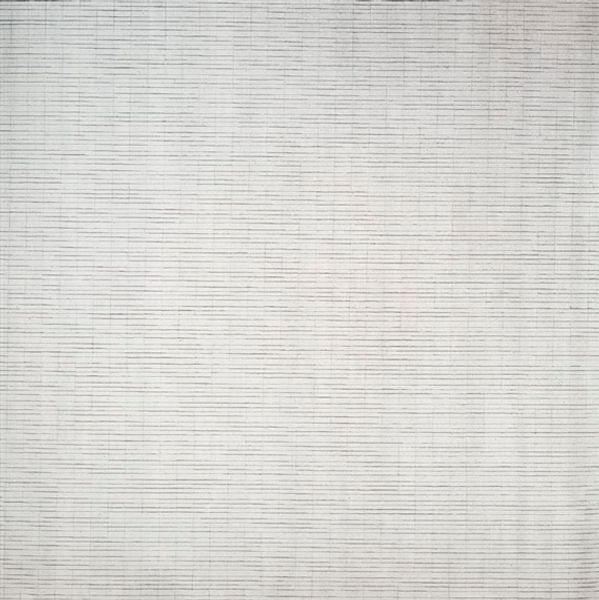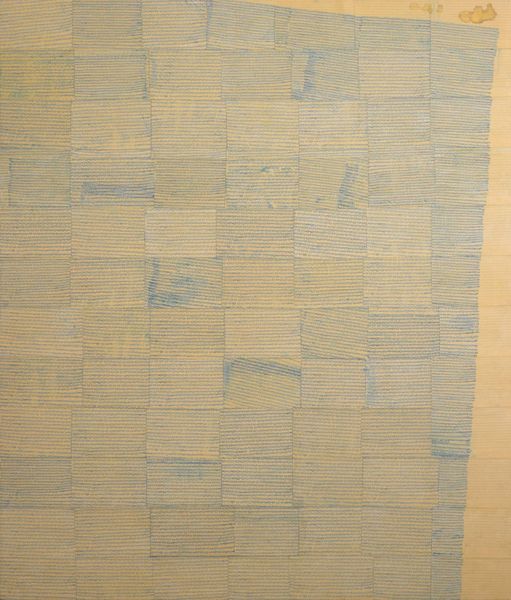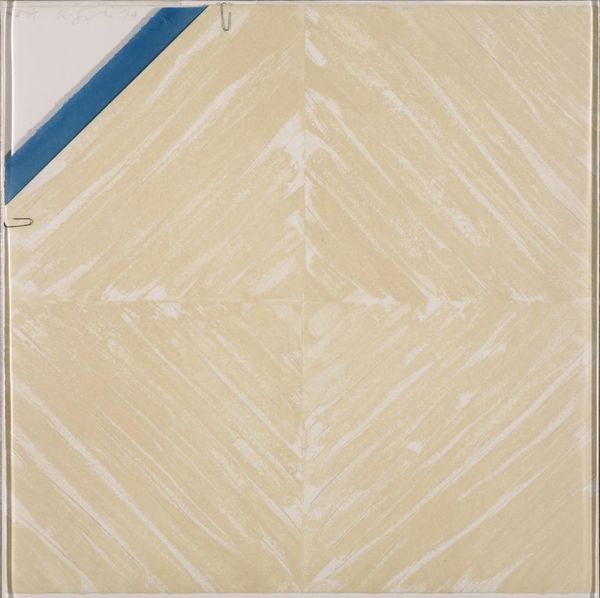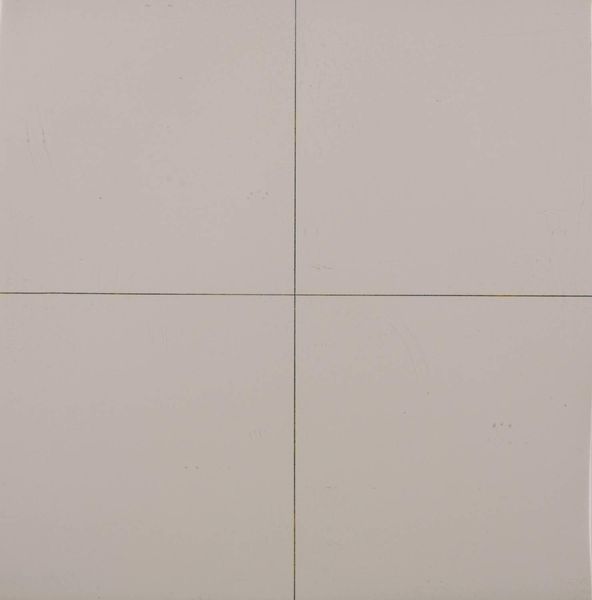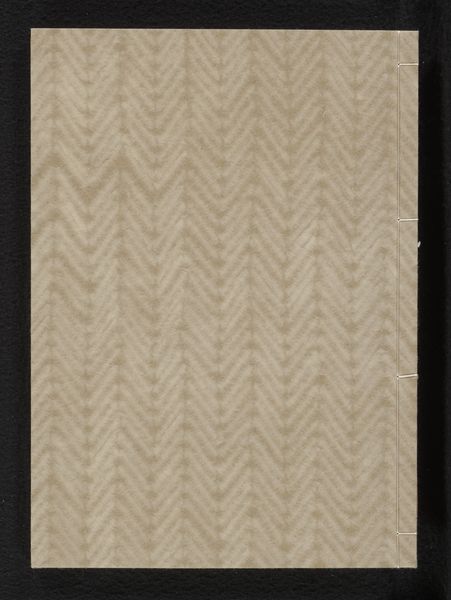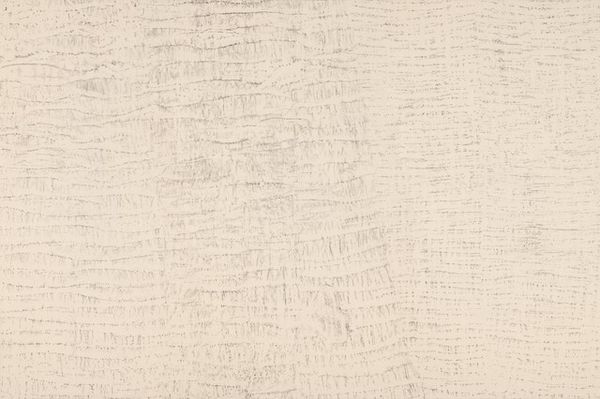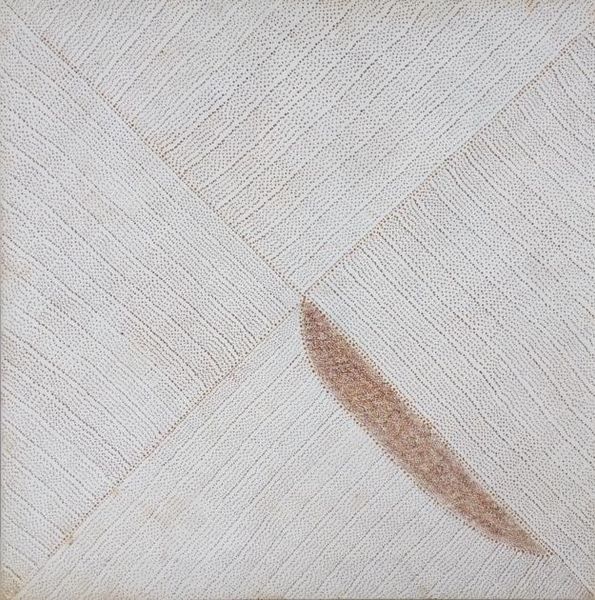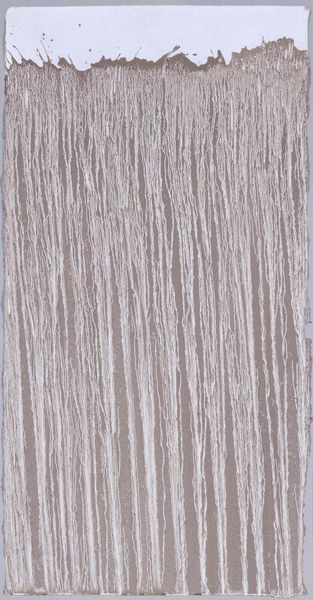
Copyright: Tony DeLap,Fair Use
Curator: It's so subtle! Looking at "Karnac I" by Tony DeLap, completed in 1972 using acrylic paint, I'm immediately drawn into its quiet, almost meditative state. It’s so pale—what do you think? Editor: Well, "quiet" is one word for it. To me, the horizontal stripes and the slightly off-kilter geometric shapes almost feel like a visual representation of institutional power—the rigid structures and the barely perceptible manipulations that uphold them. Curator: Institutional power? Hmm, that's not what I got from it at all. It felt more like a…dreamy landscape. Almost like a sandy beach right at the edge of where land dissolves into sky. Editor: Interesting! But consider the context of the early '70s. Minimalism and hard-edge painting were emerging partly as a reaction against the perceived excesses and subjectivities of previous movements. DeLap, with this rigorous geometry, might be seen to be stripping away sentimentality to expose a kind of fundamental order – or the *illusion* of it. The creamy colours feel, perhaps, almost like faded paper. What histories have gone unwritten on these strips? Curator: Okay, I can see the faded aspect, the almost lost feeling, I feel that... perhaps that adds to that quiet sensation? Like echoes of things. Still, though, it almost glows to me. Do you think that white square adds a note of…I don't know, spiritual intervention? It almost stops me in my tracks Editor: Or does it highlight the constructed nature of the entire composition? The "intervention," as you put it, reads to me as a deliberate act of disruption— a break in the pattern that forces us to acknowledge the underlying artifice of it all. It screams "pay attention to the structures." The whole idea feels relevant in light of present-day injustices! Curator: Mmm. Still makes me feel like I'm watching a sunset… a sunset with a point to make about societal hierarchies, maybe! Editor: Perhaps that's the power of it—DeLap’s ability to provoke multiple interpretations, to be both formally engaging and quietly subversive. A beach as seen through a veil of systemic critique. Curator: Yeah, or vice versa! Thank you; my beach vision needed some disrupting today! Editor: My pleasure; and hopefully that’s something listeners will appreciate as well: art being inherently open to dialogue and reinterpretation, right?
Comments
No comments
Be the first to comment and join the conversation on the ultimate creative platform.
